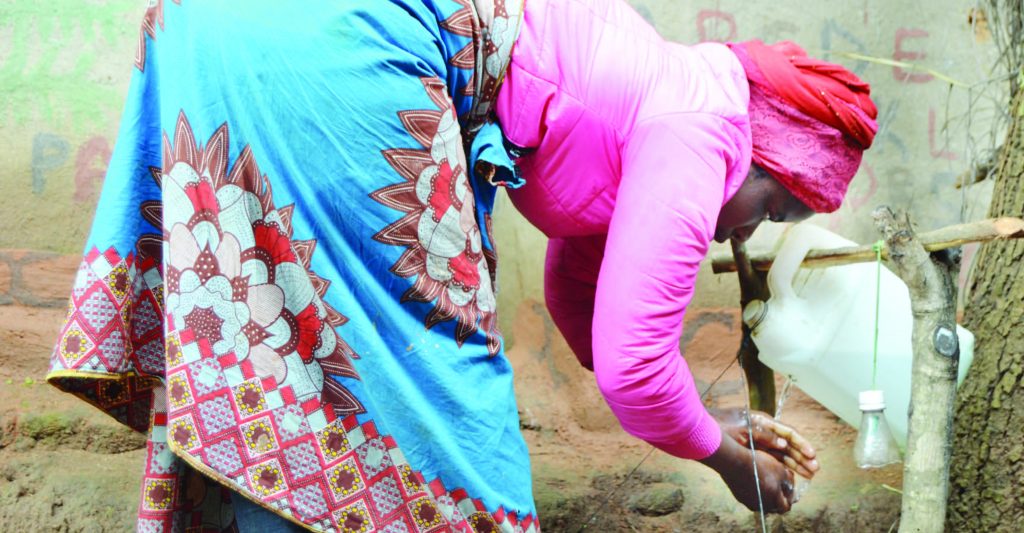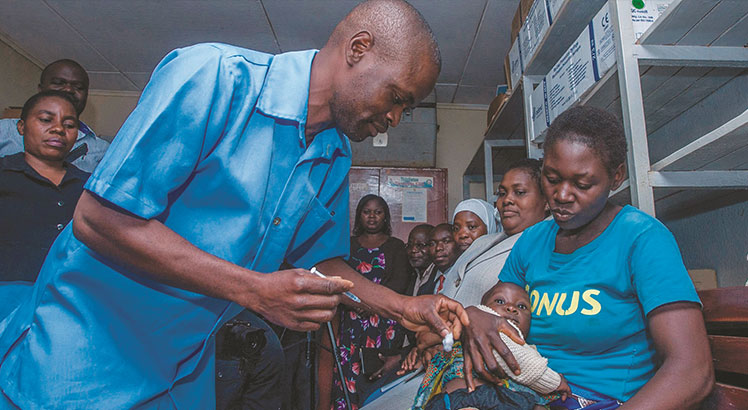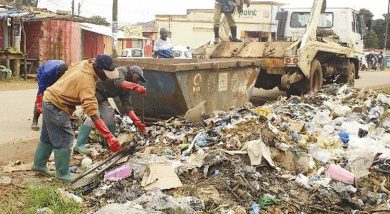Sanitising Zomba with contest
Walking around villages such as Mbembecha, Lambulira and Malunga in Senior Chief Chikowi’s area in Zomba, you find mocking words. On some pit latrine walls you find crude writings: Neba manga chako; Neba tisayambane, kumba chako.
Some of the writings are health and sanitation messages: Sambani Manja pochoka ku chimbudzi. And, if you went to Bessie Napuwa’s house, which she is letting out to three Chancellor College students as a hostel in the populous Chikanda Township, the message takes a communal turn: Sichanu, sichanga, koma tichisamalire ndi chatonse.

Ista Zimba, a mother of six from Mbembecha Village is proud to be one of those spreading the tauting messages.
“It’s like a joke, but this touting is to encourage everyone in the village to have a pit latrine. We are not talking about any other latrine, but one with a flapper that makes it impossible for flies to get in or out,” she says.
Life was not thus for the 50-year-old Zimba a year or so ago. She recalls how one time, one of her children was hospitalised at Sadzi Health Centre.
“I didn’t know what was going on. It was dysentery and I thought my son was going to die. Little did I know that all this was because of flies that were roaming freely from the toilet to our food,” says Zimba, a small-scale farmer.
Things changed, she says, when she learnt new ways to avoid ‘sharing faecal matter through flies’.
In Malunga Village, Esnat Paloti tells a different story. The borehole in the village was surrounded with still water and bushes. Mosquitoes were rife and malaria cases were persistent. Even more, water-borne diseases were common.
She has her memories: “My first-born son, aged 19, was hospitalised at Lambulira Health Centre for three days. The doctors told us the dysentery was because of unsafe and unclean water.”
Between last year and early this year, she says, the villagers were taught how to build drainages at boreholes to avoid still water and to use chlorine to avoid waterborne diseases.
In-charge for Lambulira Health Centre Hezekiah Mwale says he has seen a drop in waterborne diseases at the centre. Last year, he adds, the facility, which caters for about 37 000 people from 11 group village heads, used to have long queues which mostly involved diarrhea and skin diseases such as scabies.
“Previously, in every 15 patients we were treating, seven had diarrhea or skin diseases. Today, from treating 300 patients a day, we only have 75,” he says.
Not only has the villagers’ mindset changed, as the health facility has also improved in terms of hygiene and sanitation. In the past, he says, the toilets at the centre were filthy, with flies all over; the grounds were unkempt; the labour wards and dispensary walls were filled with cobwebs and had neither rubbish pit nor an incinerator.
Today, things have changed, the facility is spick and span, leading it to come atop in a competition organised by the Hygiene Village Project (HVP). Lambulira was followed by Mayaka Health Centre in the contest that also included Domasi, Nasawa, Matawale, Pirimiti, Magomero, Naisi and Likangala.
As winners, Lambulira got a shield and K500 000, which they used to buy more hygiene and sanitation equipment at the facility. HVP organised the competition under the Organised Network of Services for Everyone’s (Onse) Health with funding from the United States Agency for International Development (Usaid).
The competition was organised after it was noted that waste containers were not labelled to communicate what type of waste they contain; there were no guidelines for infection prevention; most health facilities did not have enough personal protective equipment (PPE); grounds were unclean while in some facilities the beds in wards were not a metre apart.
“Our outlook on sanitation has changed. We keep this place clean and we will be reviewing our strategy to keep the hospital clean every three months. We have dustbins and we clear the bushes while toilets are kept clean,” says Mwale.
He adds that they have dug a rubbish and ash pit, with the incinerator working from 8.00am to 2.30pm while a placenta dump is also operational.
Senior Chief Chikowi is happy, because Lambulira Health Centre, which is in her jurisdiction won and that her area has been declared open defeacation free. She attributes it to her subjects, whose 22 475 homes have toilets.
“Things have changed. Waterborne diseases are no longer much of our troubles. The mobilisation of my 178 village heads has paid off as sanitation has improved tremendously,” she says.
According to HVP executive director Roy Khonyongwa, under the six-month project, villagers contributed to the purchase of flappers to cover pit latrines and cement to seal them. Villagers were also taught how to take care of boreholes and make the water sources hygienic.
“We wanted the villagers to have a sense of ownership so they bought the flappers and four families contributed to buy one bag of cement which is enough to seal their pit latrines,” says Khonyongwa.
He adds that Chikowi comes second after T/A Malemia in the district to get the status. In the area, 100 boreholes have been dug and repaired while 4 000 pit latrines now have flappers and are sealed with cement.
For the health centres, Khonyongwa says in most cases, general cleanliness was overlooked. “In some areas, you would find those employed to tend the surroundings and clean the health centres were busy assisting patients. That has changed because they now know their job descriptions,” he adds.
In all this, the happiest is Zomba district medical officer Gift Msafili. “This is exciting because promotion of hygiene is the way to go. The threat of cholera reduced as people have been vaccinated for five years now. We need to put more resources into sanitation,” he says.





